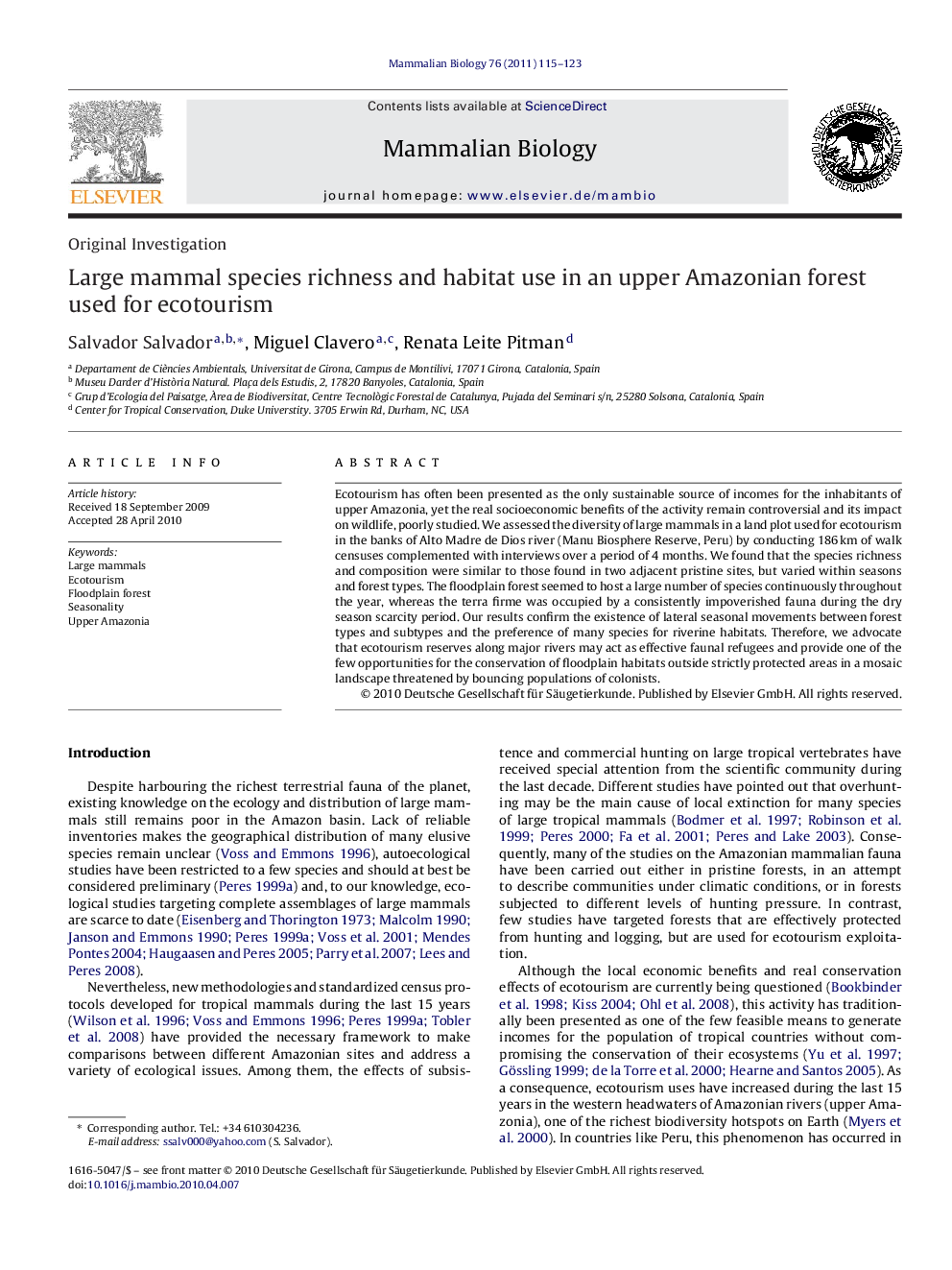| Article ID | Journal | Published Year | Pages | File Type |
|---|---|---|---|---|
| 2194119 | Mammalian Biology - Zeitschrift für Säugetierkunde | 2011 | 9 Pages |
Ecotourism has often been presented as the only sustainable source of incomes for the inhabitants of upper Amazonia, yet the real socioeconomic benefits of the activity remain controversial and its impact on wildlife, poorly studied. We assessed the diversity of large mammals in a land plot used for ecotourism in the banks of Alto Madre de Dios river (Manu Biosphere Reserve, Peru) by conducting 186 km of walk censuses complemented with interviews over a period of 4 months. We found that the species richness and composition were similar to those found in two adjacent pristine sites, but varied within seasons and forest types. The floodplain forest seemed to host a large number of species continuously throughout the year, whereas the terra firme was occupied by a consistently impoverished fauna during the dry season scarcity period. Our results confirm the existence of lateral seasonal movements between forest types and subtypes and the preference of many species for riverine habitats. Therefore, we advocate that ecotourism reserves along major rivers may act as effective faunal refugees and provide one of the few opportunities for the conservation of floodplain habitats outside strictly protected areas in a mosaic landscape threatened by bouncing populations of colonists.
